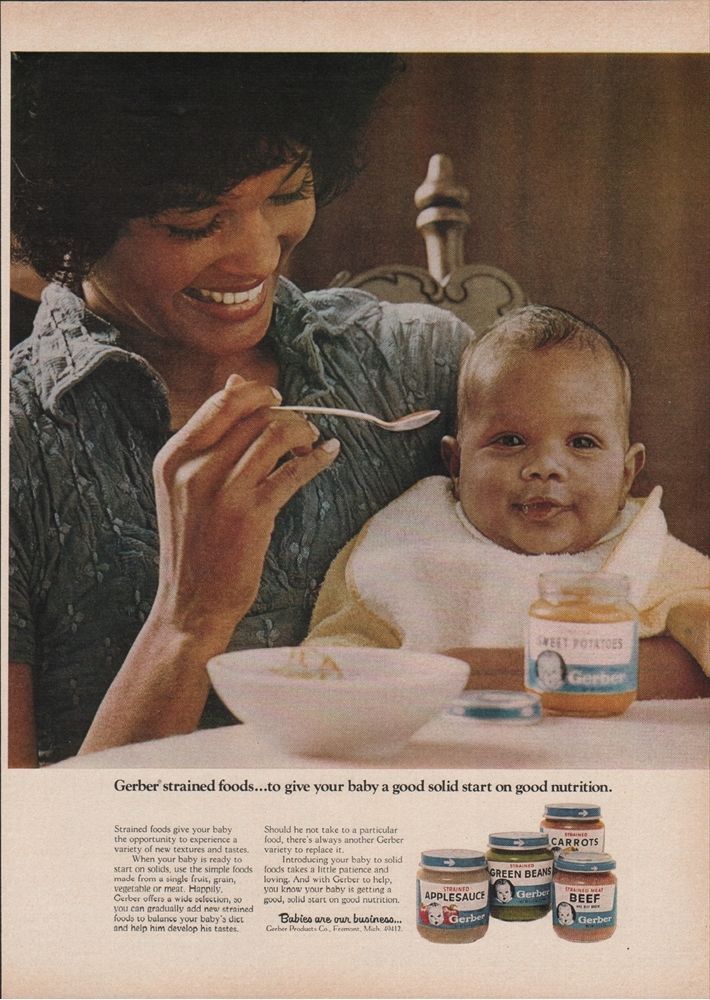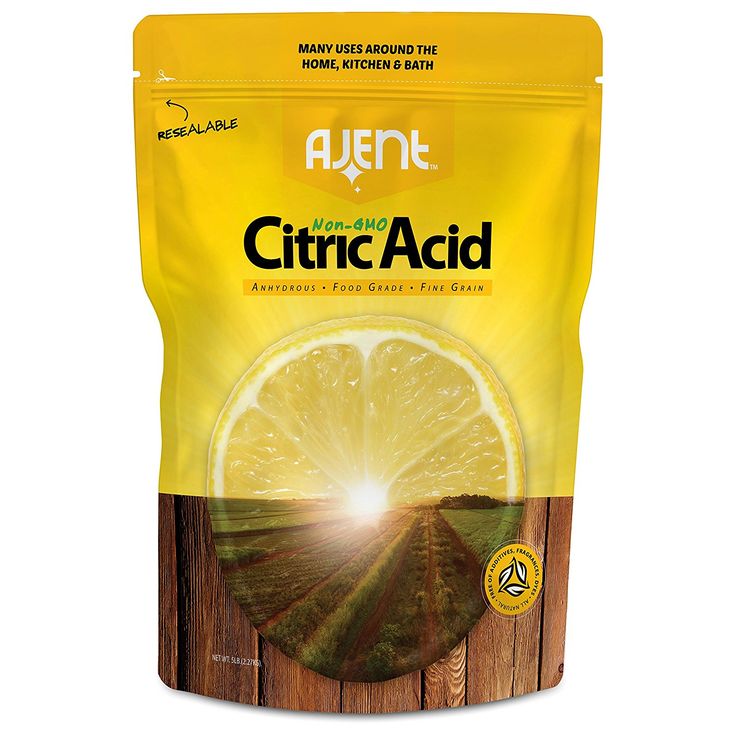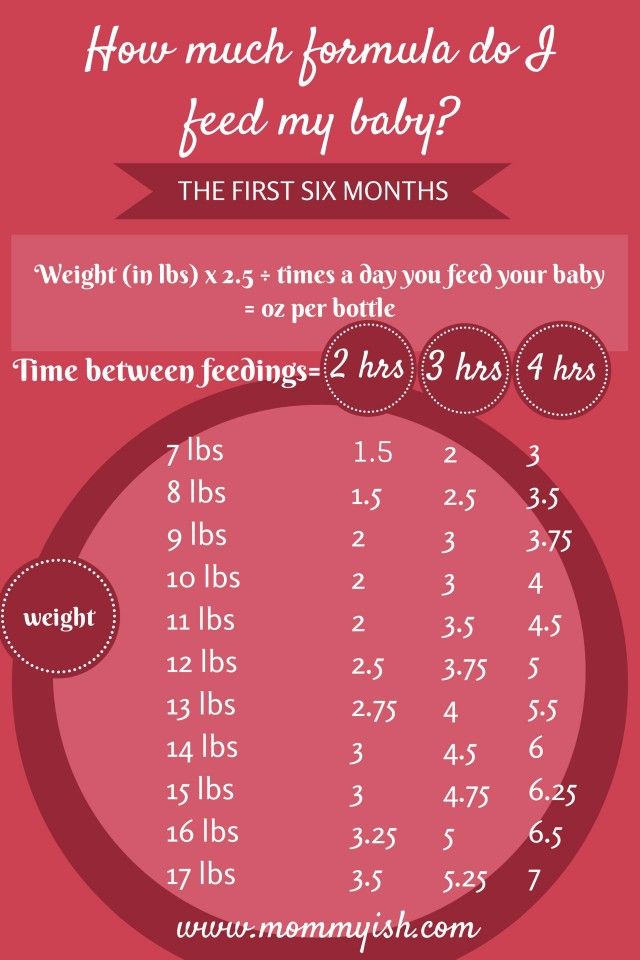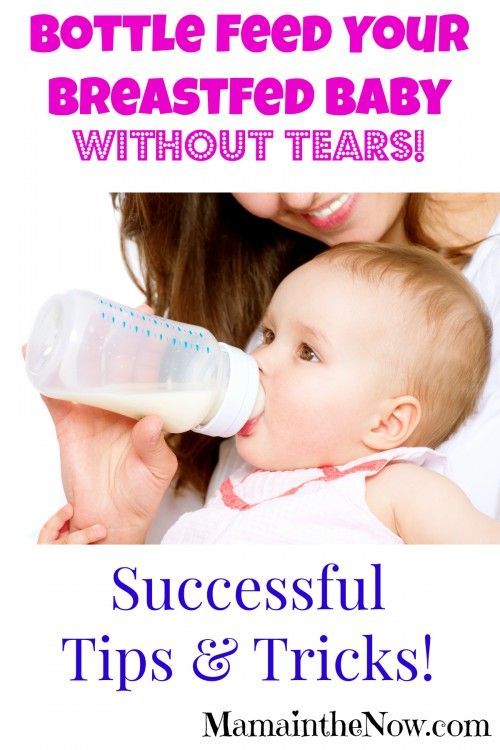Feeding baby with engorged breasts
Engorgement | WIC Breastfeeding Support
It's normal for your breasts to feel different after your baby is born. They are making milk and have extra blood flow, so they may feel tender and full. But if your breasts are warm, hard, and painful, they may be too full of milk, or engorged. If you think your breasts are engorged, speak with your WIC breastfeeding staff.
Causes of Engorgement
Engorgement happens when milk isn't fully removed from your breast. It can happen any time, but it's most likely to happen:
- As your milk transitions from colostrum to mature milk.
- If there are sudden changes in how often you nurse, such as skipping a few feedings or pumping sessions.
Signs of Engorgement
If your breasts are engorged, they may be hard, full, warm, tender, and painful, and you may have a low-grade fever. It may also be hard for your baby to latch.
Preventing Engorgement
Engorgement is uncomfortable, and it can lead to other issues like plugged ducts or a breast infection. It also can slow or lower your milk supply, because your body is not getting the message to make more milk. Breastfeeding or expressing milk every 2-3 hours and taking good care of yourself can help prevent engorgement.
Breastfeed Often
- Breastfeed your baby often in the early weeks, 8-12 times in 24 hours.
- Make sure your baby latches well to ensure baby can remove milk effectively.
- Consider avoiding pacifiers and other artificial nipples until you and baby are comfortable and breastfeeding is going well. That will help regulate your milk supply.
- If you are going back to work or school, express milk frequently and at regular intervals while you and baby are apart.
Take Care of Yourself
- Eat well, drink plenty of fluids (especially water), and get enough sleep.
Relief for Engorgement
For most moms, engorgement usually goes away in a few days with these tips:
- Breastfeed first from the engorged breast.

- Before feedings, encourage your milk flow. Put a warm, moist washcloth on your breasts or take a warm shower for 10-20 minutes.
- Massage your breasts before and during feedings, moving from the chest wall to the nipple.
- If your breast is hard, hand express or pump a little milk before nursing. That will soften your breast and make it easier for your baby to latch. Be sure to only express enough milk to soften your breasts or provide comfort. If you express too much milk, you may encourage milk production and keep getting engorged.
- Between feedings, put cold compresses on your breasts to help reduce swelling and pain.
Oversupply of Milk
Some moms make more milk than their baby needs. This is called oversupply. It can cause frequent engorgement and fast milk flow. It can make it hard for your baby to nurse. If you think you might be making too much milk, talk to your doctor or your WIC breastfeeding expert.
If you think you might be making too much milk, talk to your doctor or your WIC breastfeeding expert.
Where to Find Help
Your local WIC breastfeeding staff can help you relieve engorgement. They can also give you tips to prevent it.
Engorgement - La Leche League International
Image copyright Lisa Olschewske Photography, used with permission.
Brand new baby? Tight, full breast? Baby having trouble latching on? You probably have “first week engorgement.” And there may be some simple solutions.
Mothers have come to see engorgement as the natural follow-up to birth. But it’s more often a natural follow-up to modern expectations of age-old biology. In a nutshell, babies and breasts expect a lot more cuddling and nursing than many new mothers expect.
You’ve been making milk since your first trimester. Maybe you leaked, maybe you didn’t. But that first milk – colostrum – was there. Colostrum is thick and yellowish and sluggish and more salty than sweet, but it’s full of antibodies and protein.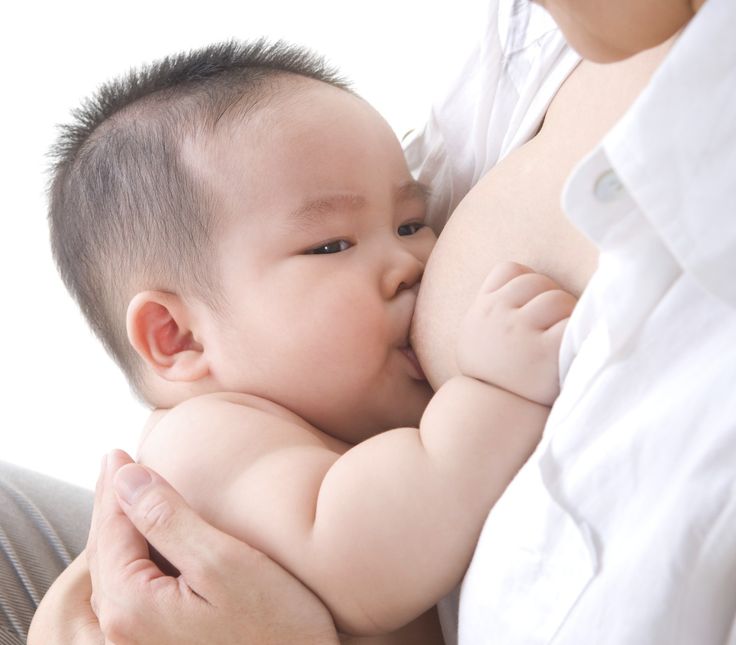 Call it “practice milk” for your newborn. It coats your baby’s stomach and intestines with antibodies. It fuels but it doesn’t flood.
Call it “practice milk” for your newborn. It coats your baby’s stomach and intestines with antibodies. It fuels but it doesn’t flood.
Now wait a couple days. Your hormones shift. The blood supply to your breasts increases to start up the milk factory, causing fullness. (If you’ve had IV fluids, that fullness may be more than normal.) Sugar enters your early milk, which pulls water into it. It turns white.* From now on, your milk will be sweet and sloshy, and there will be a lot more of it… provided your body gets the message it’s looking for. (*sometimes human milk isn’t white – see our post on the Color of Milk for more info).
Your colostrum happened automatically. Sugar and water ramped up automatically. But now your breasts wants to know how much milk to make. Is milk removed? Then milk will be made. Is milk not removed? Then the flood gradually subsides, the breasts soften, and the factory shuts down. It’s a kind of conversation between breast and baby that they both expect will go like this:
Breast: MILK! MILK! TIME TO MAKE MILK!
Baby: Why thank you! Yum! Ah. That’s enough for now.
That’s enough for now.
Breast: I CAN MAKE LOTS MORE! HOW MUCH DO YOU WANT?
Baby: Actually, I could use another sip.
Breast: READY! GO FOR IT!
Baby: Hey, you know, this stuff is good and getting better. Let me just hang out here for the next few days. I’ll nurse and nap, nurse and nap, and learn your territory. I like this never overfull, never over-hungry, never hot or cold or scared, relaxed, sleepy, snacking sweet spot. Mama is my universe, and for now, you wonderful breast, you’re at the center.
Breast: Okay, I’m ready and willing whenever you need me.
Later:
Breast: It’s been a few days and we’re hitting our stride. I know you better, you know me better. I can settle down now and not overdo it. And we can both rely on Mama to listen in on our conversation. So if you ever need more, just ask. Take more, and I’ll make more.
Take more, and I’ll make more.
But here’s how the first-week conversation goes too often:
Breast: MILK! MILK! TIME TO MAKE MILK!
Baby: I’d love to! But we’ll have to wait until after (pick one) Mama checks her social media, I’ve had my diaper changed, Auntie comes and Mama covers up for an hour, or someone – or some book – says it’s too soon to nurse again.
Breast: NO, REALLY, I CAN MAKE LOTS MORE! HOW MUCH DO YOU WANT?
Baby: Sorry. We waited too long and I’m too frazzled or too tired to sort out this new technique.
Breast: BUT I’M READY!
Baby: Yeah, too ready. You’re so full of swelling and milk that now there’s nothing soft enough to latch onto! I give up! We’ll have to try again later.
Breast: NO, REALLY! I HAVE LOTS, AND IT’S BACKING UP!
Repeat any of the above scenarios multiple times.
Later:
Breast: Hmm… I don’t get a customer very often, not even a pump. I just have to assume there’s less milk needed. I can do that.
Baby: Will someone feed me something? This thing’s broken.
Breast: ———–
Maybe your own breast-baby conversation went off-course at first. Here’s how you can help get it back on track:
- Keep your baby touching you most of the time, lying on your chest, in your arms, at your side. (If you think you’re going to fall sleep, make sure your baby is in a safe place. You’ll find more tips in our sleep posts: Sleep: Bedshare and Safe Sleep for Breastfeeding Babies). Sure, you can shower, eat, let your loved ones do some holding. But as a wise person said years ago, “There’s no such thing as a baby. There is a baby and someone.” Right now, almost all the time, that someone needs to be you.
 And a calmer baby is a calmer, less grabby nurser, so your nipples may be grateful for this gentler start.
And a calmer baby is a calmer, less grabby nurser, so your nipples may be grateful for this gentler start. - Try “relaxed nursing”. Get comfortable in the “couch slouch” you’d watch television with. Not flat, not straight up (hospital beds can be especially good for leaning back). Lay your baby chest-down on your own chest, between your breasts. He may curl up and go to sleep, which is fine. Just being on your chest helps keep his blood sugar, temperature, breathing, and heart rate normal, and being there on his chest makes him more competent. If he starts rummaging around looking for your breast, or seems restless, or just makes movements with his mouth, make the offer. Help him as much as you like, but don’t assume you know how he wants to do this. Follow his lead rather than leading him. Shift your breast and your baby in any way that feels right to you, but fit it to what he’s trying to do. He knows what he’s looking for, and it’s probably not one of the holds the books show.
 He may even nurse in his sleep, if you put his face near your nipple. If you find yourself playing with his feet, or find his feet pressing against something, he’s grounding himself, just as you would. And you’re using your mothering instincts. Good for both of you!
He may even nurse in his sleep, if you put his face near your nipple. If you find yourself playing with his feet, or find his feet pressing against something, he’s grounding himself, just as you would. And you’re using your mothering instincts. Good for both of you! - If your breasts or nipples are sore, ask for help. Nothing about breastfeeding should hurt. Pain is a sign to all mammals that something’s not right. Some fullness and a little nipple discomfort for a few days, okay. But bruising, broken skin, or outright pain? It’s not good for you, and it probably means your baby is having some trouble taking milk out easily.
- If you’re uneasy about any advice you get, try someone else. Almost all breastfeeding problems now have known reasons and remedies, but no one person knows them all. Maybe you have a nursing friend who can visit. Look over the Womanly Art of Breastfeeding, 8th edition, Chapter 4. Or call your LLL Leader – find your local Leader here.
 Super-sore nipples or breasts usually mean the baby’s not getting milk as effectively as he could.
Super-sore nipples or breasts usually mean the baby’s not getting milk as effectively as he could.
What if I’m already badly engorged?
- Keep your baby with you – on your chest, in your arms, at your side. Body contact can actually help, and it makes frequent nursing more likely.
- Nurse or express your milk at least every 2 hours, and at least twice during the night. The more milk that collects in your breasts, the stuffier they get and the harder it is for fluids to move. By taking milk out often, you make it easier for all the fluids in your breast – not just the milk – to move around.
- Move your breasts around gently and massage them in any way that feels good. It may help shift excess fluids.
- Lie back, which keeps your breasts higher than usual. Fluids follow gravity.
- A bag of frozen vegetables can be a cold compress. Wrap it in a towel and put it on your breast(s) for about 20 minutes, then take it off for about 20 minutes.
 The breaks “wake up” your breasts and are more effective than steady cold.
The breaks “wake up” your breasts and are more effective than steady cold. - Use cabbage leaves to help bring down swelling – an old remedy in the “can’t hurt, might help” category. Discard the outer, possibly sprayed, leaves of a head of green cabbage. (Red cabbage could stain.) Now peel off one or more leaves, tear out the hard vein if you like, crumple each leaf gently in your hand, and put the leaves on your breast (not over your nipple). They should feel nice and cool, and can be held in place with a bra or shirt. Leave them on until you get tired of them, and repeat as often as you like. Maybe there’s a reason cabbage leaves are shaped the way they are!
- Stand in a shower and let the hot water land between your shoulder blades. You may find yourself leaking in the shower. If not, it’s still relaxing.
What if my baby can’t nurse well enough or often enough to get my milk production going and keep it going?
- In the first couple hours post-birth, you’re likely to have the most colostrum.
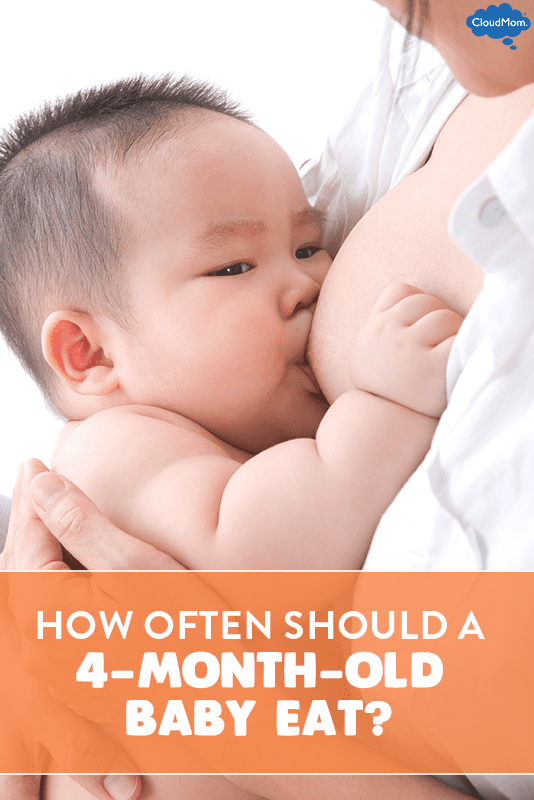 If your baby can’t nurse soon after birth, you can hand express and give your baby her “starter dose” of colostrum with a spoon. (See our post for information on hand expression.)
If your baby can’t nurse soon after birth, you can hand express and give your baby her “starter dose” of colostrum with a spoon. (See our post for information on hand expression.) - In the first couple days, colostrum is too thick to pump easily, but you can hand express into a spoon (plastic works really well). While you express into one spoon, a helper can give another spoonful to the baby. Do it as often as you like, but at least every couple hours during the day and at least twice at night if you can.
- Once your milk starts to increase quickly (a couple days after birth), you can try a good electric pump. Do a bit of gentle breast massage and hand expression before you start, in the middle, and at the end.
- Don’t worry about making too much milk. Set your “milk thermostat” high in these early days and you can always back it down. If you set it too low it can be tough to bring it back up.
What if I’m too full for my baby to latch on?
- Hand express before you try to nurse.
 You don’t have to soften your whole breast, just the area around your nipple where his mouth – especially his lower jaw – needs to go. (It’s hard to latch onto a soccer ball, a lot easier on a soft water balloon.)
You don’t have to soften your whole breast, just the area around your nipple where his mouth – especially his lower jaw – needs to go. (It’s hard to latch onto a soccer ball, a lot easier on a soft water balloon.) - Press fluid gently out of the way. It’s another way to soften the breast around your nipple to give your baby more softness to latch onto. You might try using your fingertips or the sides of your index fingers to make slight dents in the area around your nipple. Do any pressing gently and for a short time; nothing you do to your breasts should hurt.
What if I become engorged and my baby isn’t a newborn?
Sometimes an older baby gets sick and doesn’t eat as much for a few days. Or maybe it’s a growth spurt that boosted your production but ended quickly, temporarily leaving you with more milk than either of you wants. You’ll find tips on dialing back overproduction at XX.
Engorgement in just one part of your breast could be from a plugged milk duct in that area. Anything that reduces or stops milk flow can cause a milk “log jam” in all or part of your breast. If the backup continues too long, you could end up with a breast inflammation or infection called mastitis. But odds are that just nursing more often, hand expressing, or pumping – all with some gentle massage – will break up the “log jam”. You’ll find more low-tech tips on getting your milk moving again in our post on plugged ducts and mastitis.
Anything that reduces or stops milk flow can cause a milk “log jam” in all or part of your breast. If the backup continues too long, you could end up with a breast inflammation or infection called mastitis. But odds are that just nursing more often, hand expressing, or pumping – all with some gentle massage – will break up the “log jam”. You’ll find more low-tech tips on getting your milk moving again in our post on plugged ducts and mastitis.
Remind me why I’m bothering?
If your baby is three or four days old, you may be feeling especially overwhelmed. But just keeping your baby in body contact with you, nursing freely, and following the baby’s lead can keep most early problems, including engorgement, from happening, (and certainly helps you fall in love).
Mild engorgement doesn’t need more than the comfort measures above. But if milk builds up in your breasts too much for too long, milk production can shut down partially or completely for this baby. Too-much-too-long engorgement can also lead to a breast infection. (See our post for information on mastitis.) So even for your own health, it’s worth dealing with engorgement.
(See our post for information on mastitis.) So even for your own health, it’s worth dealing with engorgement.
It takes most mothers a few weeks to feel fairly comfortable with motherhood, and first-week problems can loom especially large. Once you get past any early hurdles like engorgement, you and your baby can have months or years of one of the simplest, most absent-minded and delicious, free-est and most health-giving relationships of your life. Many, many bottle-feeding mothers wish they had breastfed. You’re not likely to meet a breastfeeding mother who wishes she hadn’t.
It’s worth getting the help you and your baby deserve, and La Leche League is here to help you.
Further ReadingThe Womanly Art of BreastfeedingAmount of Milk – how to tell if your baby is getting enough milkFrequency of Feeding FAQs
Positioning and Latch
Published January 2018.
What is breast swelling? | Breast swelling
Some mothers experience breast swelling when milk begins to flow in the first days after childbirth. Usually this phenomenon is temporary and easily eliminated. Read our article to find out how to help yourself.
Usually this phenomenon is temporary and easily eliminated. Read our article to find out how to help yourself.
Share this information
Sioned Hilton, health visitor, neonatal nurse and lactation consultant:
Schoned, a mother of three, has been supporting families with newborns and young children for over 30 years. She provides advice on breastfeeding and pumping, both in clinics and at home. In addition, Schoned writes articles for parenting magazines, attends conferences, and conducts seminars for attending physicians.
When you start breastfeeding, you first produce a small amount of colostrum, which gradually increases over the first few days. After about two to four days, production increases significantly. This phenomenon is called the "arrival" of milk. 1
One of the signs that milk is starting to come in is a change in the breast - it fills up and becomes firmer. This is due not only to an increase in the amount of milk, but also to increased blood flow and additional lymphatic fluid to the breast tissues. 2
2
If the child eats well and often, then for most mothers this feeling of heaviness disappears over time without any complications. However, some women produce so much milk that their breasts fill up and become painful and very hard. This condition is called breast swelling. And although everything usually passes in a day or two, this period can be quite painful.
How does breast swelling manifest itself?
Swelling may affect one or both breasts. It can cause swelling, sometimes down to the armpits, and a throbbing sensation. The chest becomes quite hot, sometimes lumps are felt in it. All this is due to the fact that a huge number of processes take place inside. You may also notice other symptoms, such as the skin on your breasts becoming shiny and tight, and your nipples becoming hard and flat. Swelling of the mammary glands can even cause a temperature to rise to 37.5–38.3°C (99–101°F). 3
In addition to painful sensations, breast swelling is also dangerous because it can make breastfeeding difficult, and this, in turn, will worsen the situation even more. If the baby finds it difficult to latch on because the nipples have become flat and the breast tissue is firmer, nipples may become inflamed. In addition, in the event of a poor grip, he will not be able to completely empty the chest. Thus, if left untreated, swelling of the mammary glands can lead to blockage of the milk ducts, mastitis, and reduced milk production.
If the baby finds it difficult to latch on because the nipples have become flat and the breast tissue is firmer, nipples may become inflamed. In addition, in the event of a poor grip, he will not be able to completely empty the chest. Thus, if left untreated, swelling of the mammary glands can lead to blockage of the milk ducts, mastitis, and reduced milk production.
What causes breast swelling?
Usually breast swelling is due to the fact that the child does not feed often enough (less than eight times a day). In principle, this can happen to any mother, but women who have undergone various breast surgeries, including breast augmentation, are more prone to swelling of the mammary glands. 2 Wearing a bra that is the wrong size or that is too tight can increase discomfort and lead to clogged milk ducts and even mastitis.
Breast swelling can occur in both breastfeeding mothers and mothers who are not or cannot breastfeed. The hormonal changes that occur after the birth of a baby and the release of the placenta and increase milk production are independent of whether you are breastfeeding or not. Swelling can also occur if the number of feedings is drastically reduced, for example, if the child becomes ill, sleeps longer, starts eating solid foods, or goes to nursery.
Swelling can also occur if the number of feedings is drastically reduced, for example, if the child becomes ill, sleeps longer, starts eating solid foods, or goes to nursery.
How to treat breast swelling?
2The best cure for swollen breasts is a hungry baby! Try to empty your breasts as much and as often as possible to facilitate the release of milk. To do this, feed your baby on demand, preferably eight to twelve times a day.
Maintain skin-to-skin contact with your baby, cuddling as often as possible during the day and at night when you are awake. This will allow him to smell the attractive smell of your milk and have easy access to the breast, and you will be able to better monitor signs that he is hungry and, accordingly, feed more often. Let the baby eat enough from one breast before offering the second.
It's a good idea to see a lactation consultant or specialist to check if your baby is properly grasped and positioned. It depends on how well he will eat and empty his chest. The tips below will also help you relieve the symptoms of breast swelling.
The tips below will also help you relieve the symptoms of breast swelling.
Tips for relief of breast swelling 2
- Breastfeed at least eight times a day.
- Make sure your baby is latching on well.
- Try other feeding positions.
- Gently massage your breasts during feeding to improve the flow of milk.
- Express some milk by hand or with a breast pump before feeding to soften the nipple and make it easier for your baby to latch on.
- If your breasts are still firm and full after a feed, pump more until you feel better.
- If your baby cannot breastfeed, express milk for him. Pumping must be continued until the breast becomes softer, and do this at least eight times a day.
- Try the areola pressure softening technique. This helps to remove excess fluid from the breast. A lactation consultant or specialist will show you how to do this.
- If milk leaks, try taking warm showers or applying warm flannel to your breasts just before feeding or pumping to soften your breasts and make it easier for your milk to flow.
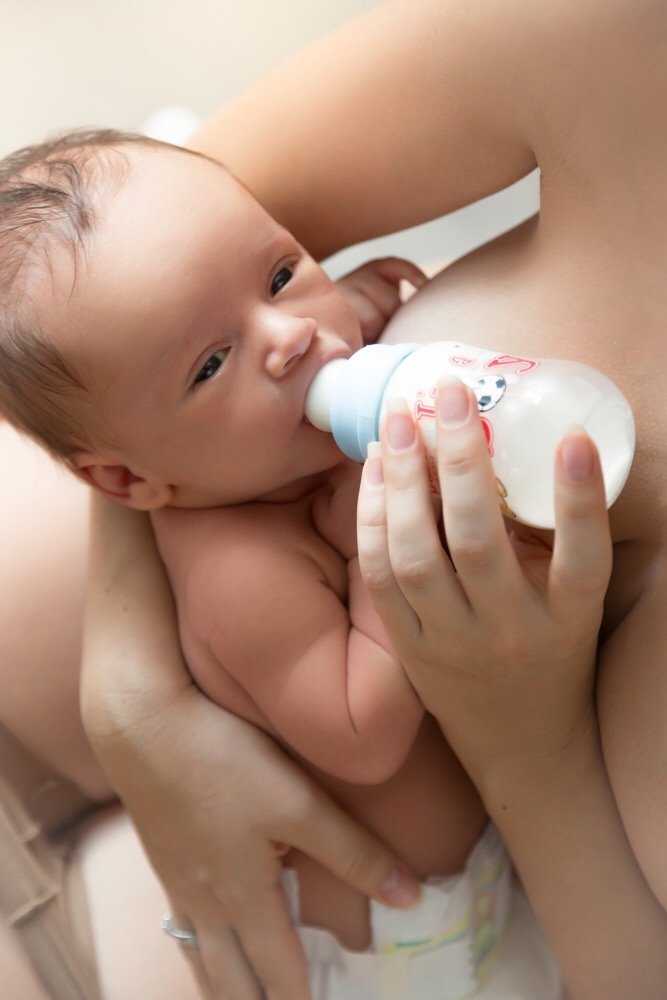 You should not, however, warm the chest for more than two minutes, as this can only increase swelling.
You should not, however, warm the chest for more than two minutes, as this can only increase swelling. - If your milk isn't leaking, try applying cold compresses, chilled gel pads, or even frozen green peas wrapped in a towel for ten minutes after feeding to reduce swelling and relieve pain.
- Put clean cabbage leaves in your bra. Yes Yes! For many moms, it really helps reduce swelling and discomfort, and there are scientific explanations for this. 4
- Take an anti-inflammatory pain reliever. While breastfeeding, you can take some medications, in consultation with your doctor. Always consult your doctor, follow the drug manufacturer's instructions and the pharmacist's recommendations. To learn more about medications and breastfeeding, read our article on breastfeeding when sick.
- Wear an appropriately sized and comfortable nursing bra, avoid underwire or no bra at all.
- Do not skip feedings or stop breastfeeding abruptly as this may increase breast swelling.

Seek medical advice if your 5 temperature rises above 38 °C or if your baby is unable to suckle due to breast swelling.
And in any case, try to remain calm. Your body is just getting used to producing milk and feeding your baby. Breast swelling should go away on its own soon after you both get comfortable with breastfeeding.
Literature
1 Pang WW, Hartmann PE. Initiation of human lactation: secretory differentiation and secretory activation. J Mammary Gland Biol Neoplasia. 2007;12(4):211-221. - Pang, W.W., Hartmann, P.I., "Lactation initiation in the lactating mother: secretory differentiation and secretory activation." G Mammary Gland Biol Neoplasia. 2007;12(4):211-221.
2 Berens P, Brodribb W. ABM Clinical Protocol# 20: Engorgement, Revised 2016. Breastfeed Med . 2016;11(4):159-163. - Behrens P, Brodrhibb W, "AVM Clinical Protocol #20: Engorgement, 2016 edition". Brestfeed Med (Breastfeeding Medicine). 2016;11(4):159-163.
Brestfeed Med (Breastfeeding Medicine). 2016;11(4):159-163.
3 Affronti M Low-grade fever: how to distinguish organic from non-organic forms. Int J Clin Pract. 2010;64(3):316-321. - Affronti M. et al., "Subfebrile temperature: how to distinguish organic from non-organic cases." Int Zh Klin Prakt. 2010;64(3):316-321.
4 Boi B et al. The effectiveness of cabbage leaf application (treatment) on pain and hardness in breast engorgement and its effect on the duration of breastfeeding. JBI Libr Syst Rev . 2012;10(20):1185-1213. - Boys B. et al., "Effectiveness of cabbage leaf (as a drug) for breast pain and engorgement, and its effect on the duration of breastfeeding." JBAi Libr Sist Rev. 2012;10(20):1185-1213.
5 NHS Choices. How do I take someone's temperature? [Internet]. UK: NHS Choices; updated 2016 June 29. Available from : www.nhs.uk/chq/pages/1065.aspx?categoryid=72 - NHS Choice. "How to measure the temperature?" [Internet]. United Kingdom: NHS Choice, 29 June 2016 edition Article linked: www.nhs.uk/chq/pages/1065.aspx?categoryid=72
UK: NHS Choices; updated 2016 June 29. Available from : www.nhs.uk/chq/pages/1065.aspx?categoryid=72 - NHS Choice. "How to measure the temperature?" [Internet]. United Kingdom: NHS Choice, 29 June 2016 edition Article linked: www.nhs.uk/chq/pages/1065.aspx?categoryid=72
Stopping breastfeeding | Stopping breastfeeding
When is it time to stop breastfeeding and what is the best way to do it? Read our article for useful practical tips on weaning.
Share this information
How long should breastfeeding continue? Three months? Six? Year? Or maybe a few years?
The World Health Organization (WHO) and other authorities recommend that infants be exclusively breastfed for the first six months and then continue to be breastfed along with other foods (complementary foods) for at least two years. 1
The fact is that breast milk is not just food. It is a natural sedative if the child is anxious or tired. In addition, milk contains immune-boosting components, the amount of which increases dramatically when the baby gets sick. 2
It is a natural sedative if the child is anxious or tired. In addition, milk contains immune-boosting components, the amount of which increases dramatically when the baby gets sick. 2
According to anthropologists, the natural age of a person to stop breastfeeding is even more than two years. Given factors such as tooth development, body weight, comparison with other primates, and historical evidence, some scientists believe that breastfeeding may last up to two to four years. A number of researchers even believe that our ancestors breastfed children up to six or seven years of age. 3
Today, more than 60% of mothers in developed countries start giving their babies formula or complementary foods before six months, 4 although not recommended by WHO.
When is it time to stop breastfeeding?
Weaning means that you gradually stop breastfeeding your baby. Ideally, the first step in this process is the gradual introduction of complementary foods, starting at about six months of age. In this case, breastfeeding continues. The weaning process continues until the mother's milk has been completely replaced by other foods and drinks.
In this case, breastfeeding continues. The weaning process continues until the mother's milk has been completely replaced by other foods and drinks.
“After six months, the baby needs higher doses of certain nutrients, such as iron, zinc, vitamins B and D, that he cannot get from breast milk or from his own reserves,” says Sarah Beeson, health visitor from Great Britain.
“But solid food should at first only supplement the main diet with breast milk and gradually replace it. Mother's milk remains the main source of nutrition for the baby for many months to come.”
On average, a seven-month-old baby gets 93% of its calories from breast milk. And even between the 11th and 16th months, milk provides him with about half of the daily calorie intake. 5
“Sometimes moms think that breastmilk is not so important once the baby has started eating solid foods, but in reality, no matter how many months old the baby is, there is nothing better for him than your milk,” continues Sarah.
In fact, the process of finishing breastfeeding can take as long as mother and baby want. “When to stop breastfeeding is up to you,” says Sarah. The only thing that matters is what you think is right for you and your child.”
How to wean
Whenever you decide to start weaning your baby, it is best to do it gradually. An abrupt cessation of breastfeeding can lead to lactostasis, blockage of the milk ducts and mastitis, and in a child such a sudden change can adversely affect the state of the digestive and immune systems. In addition, it will be difficult for both of you psychologically.
When should I stop breastfeeding?
Sometimes mothers mistakenly believe that it is time to stop breastfeeding, when in fact there is no reason to. If you're returning to work, breastfeeding can be a great way to stay close to your baby during this difficult time for both of you. You can express milk at work, and morning and evening feeding sessions will give you the opportunity to spend time alone with your baby. If you need to leave without your baby, you can also express milk and bring or send it home.
If you need to leave without your baby, you can also express milk and bring or send it home.
If you get sick, this is not always a reason to stop breastfeeding. Read our advice in the article on breastfeeding when sick and consult with your healthcare professional.
Weaning up to six months
If you cannot continue breastfeeding until six months and want to try weaning your baby, start by replacing one feeding a day with a bottle of formula.
“It's best to start with midday feedings. Babies are very alert and able to smell breast milk nearby, so ask your partner or relative to give your baby a bottle when you're in the other room,” Sarah advises.
“Be hygienic when preparing food. Be prepared for the fact that the baby will take fewer servings of expressed milk per day than if he was fed directly from the breast. Don't make him eat more milk than he wants."
You will probably feel that your breasts are fuller and more tender. This is due to the fact that your body is rebuilding to produce less milk. If this creates discomfort, try expressing some milk—just enough to relieve the discomfort without stimulating extra production.
This is due to the fact that your body is rebuilding to produce less milk. If this creates discomfort, try expressing some milk—just enough to relieve the discomfort without stimulating extra production.
When your body adjusts to the new volume - usually after a few days - replace with formula for one more meal a day. Continue this until you have changed all feedings and your baby is completely weaned.
“I had complications after my first birth, as a result I lost a lot of weight very quickly, and besides, I developed mastitis. Lactation was very weak, and at three months I was forced to stop breastfeeding,” recalls Jennifer, a mother of two from the UK, “I gradually replaced one feeding, so physically it was easy, but mentally it was hard for me.”
If you want to maintain closeness with your baby and all the health benefits of breastfeeding, but still need to cut down on breastfeeding, try partial weaning, replacing only a few feeds a day with formula.
Weaning after six months
Once your baby starts eating solid foods (about six months old), you will notice that breastfeeding naturally occurs less and less.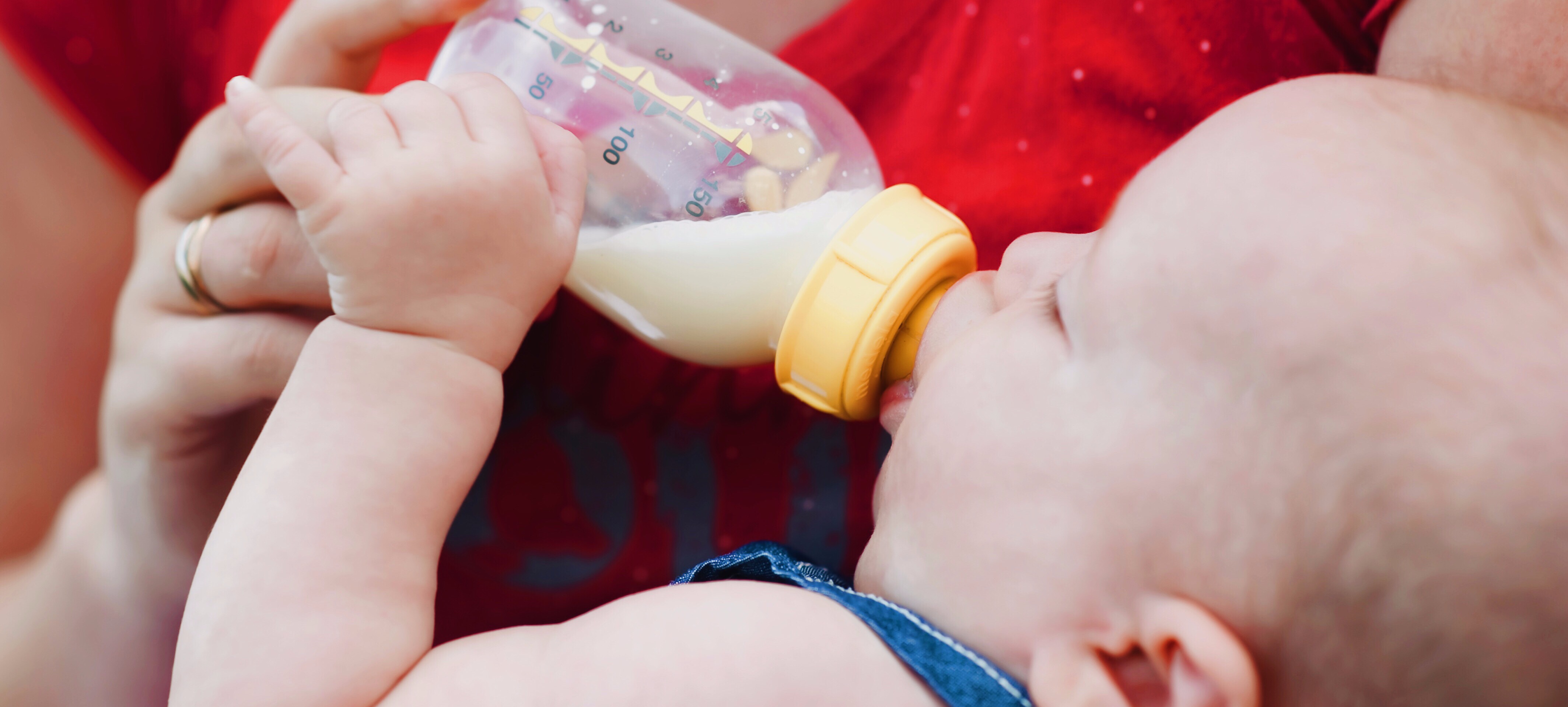 For a year, it can be reduced to just a couple of times a day, and feedings will be replaced by full meals and healthy snacks.
For a year, it can be reduced to just a couple of times a day, and feedings will be replaced by full meals and healthy snacks.
Anyway, if you intend to continue to reduce breastfeeding, do it gradually, replacing one feeding at a time. Use formula milk if your baby is under 12 months old. With cow's milk, you should wait at least up to a year.
“When I decided to wean my son, I breastfed him three times a day and gave him other foods three times plus light snacks. Gradually, I replaced all breastfeedings with formula. By 11 months, we only had one nighttime breastfeed left,” says Ruth, a UK mom.
There are various ways to distract a child from changes in his diet. Some mothers suggest that instead of breastfeeding something to drink and eat together to maintain a sense of closeness. You can also change your daily routine, play your favorite game, or replace feeding with caresses - from you or from your partner. Some children take longer to get used to the new food, but in the end everything falls into place. If you are having difficulty weaning, ask your healthcare provider for advice.
If you are having difficulty weaning, ask your healthcare provider for advice.
Ending breastfeeding naturally
Ending breastfeeding can be guided by the baby's wishes. This is called baby-initiated weaning, or the natural termination of breastfeeding. Such a process is likely to be long and gradual. Month after month, feeding sessions will become shorter and less frequent, until one day the child completely loses interest in the breast.
“My daughter stopped breastfeeding on her own when she was four years old,” says Sarah, a mother from the UK. And once, when we were on vacation, she seemed to just forget about her breasts. Now, six months later, she sometimes still asks for breasts, but she already knows that there is no milk there.
You will have a huge amount of time for the body to adapt, so there should be no discomfort or swelling of the breast. However, you may find it difficult emotionally, so spend more time petting and bonding with your baby.
“Child-initiated termination of breastfeeding was right for me because I never gave my son formula or a bottle. I didn’t want to abruptly stop feeding and refuse him,” recalls Kelly, a mother from the UK, “He himself lost interest in breasts at the age of two and a half years. For us, it was the best scenario, although emotionally it was not very easy for me.”
What if you need to stop breastfeeding quickly?
It is best not to stop breastfeeding abruptly, but sometimes it is necessary for medical reasons or because you cannot be near your baby.
If you have been breastfeeding your baby up to this point, you will most likely have to express your milk to avoid breast swelling. Some mothers prefer to use a breast pump for this, others find it easier to express milk manually. You only need to pump a little, just to eliminate the discomfort, otherwise your body will take it as a signal to produce more milk.
At first, the breasts may swell and become tender, but this will pass. Breast milk contains a so-called feedback lactation inhibitor. When breastfeeding is stopped, this inhibitor tells your body to slow down milk production, but it can take days or even weeks for your breasts to rebuild.
Breast milk contains a so-called feedback lactation inhibitor. When breastfeeding is stopped, this inhibitor tells your body to slow down milk production, but it can take days or even weeks for your breasts to rebuild.
Certain medications can relieve pain and should be discussed with your doctor. Always follow your pharmacist's instructions or directions, and consult your healthcare professional before taking any medication.
“I had to abruptly stop breastfeeding when my daughter was eight months old because she had to take strong painkillers,” says Peggy, a mother from Switzerland. “It was very difficult because the baby was constantly looking for a breast and crying. I held her tightly to me as I gave her a bottle. This calmed her, and after a month everything was all right.
Can I continue breastfeeding if I want to get pregnant again?
Breastfeeding is a natural contraceptive. However, this method is not the most reliable, especially after six months or if you are not exclusively breastfeeding. This means that you can get pregnant even while you are breastfeeding.
This means that you can get pregnant even while you are breastfeeding.
Pregnant and breastfeeding mothers sometimes receive conflicting advice about whether to stop breastfeeding. Consistent feeding of two children of different ages is of course possible, and with the advent of the second baby, your body will produce the kind of milk that both of them need.
It is not uncommon for an older child to refuse to breastfeed or skip feedings if the mother is pregnant. This may be due to changes in milk composition that occur during pregnancy. Milk can change the taste and become less sweet. 6 If your baby is under one year of age when he starts to stop breastfeeding, make sure he continues to gain weight.
Talk to your doctor if you want to continue breastfeeding during pregnancy, but have had a preterm birth or miscarriage, or have any bleeding in the past.
If you need medical help to conceive, certain drugs and procedures may not be suitable while you are breastfeeding. Discuss all possible options before deciding to stop breastfeeding.
Discuss all possible options before deciding to stop breastfeeding.
And finally...
Whenever you decide to stop breastfeeding, and whatever method you choose to do so, be kind to yourself and your baby. This is a huge change for both of you physically, hormonally, and emotionally, so proceed thoughtfully and carefully.
“Although my body responded normally to stopping breastfeeding, it was psychologically difficult for me. The thing that united us for so long is over, - Jane, a mother of two children from the USA, shares her impressions, - I worked long hours, five days a week, and breastfeeding made me feel that I occupy a special place in the lives of children. But when it stopped, we soon found other ways to be together.”
Literature
1 World Health Organization. [Internet] Health Topics: Breastfeeding: 2018 [Accessed: 02/08/2018]. Available from : http://www.who.int/topics/breastfeeding/en - World Health Organization. "Health Issues: Breastfeeding" [Internet]. Geneva, Switzerland: WHO; 2018 [Visit 02/08/2018]. Article linked: http://www.who.int/topics/breastfeeding/e
"Health Issues: Breastfeeding" [Internet]. Geneva, Switzerland: WHO; 2018 [Visit 02/08/2018]. Article linked: http://www.who.int/topics/breastfeeding/e
2 Hassiotou et al. Maternal and infant infections stimulate a rapid leukocyte response in breastmilk. Clin Transl Immunology. 2013;2(4): e 3. - Hassiot F. et al., "Infectious diseases of the mother and child stimulate a rapid leukocyte reaction in breast milk." Clean Transl Immunology. 2013;2(4):e3.
3 Dettwyler KA. When to wean: biological versus cultural perspectives. Clin Obstet Gynecol . 2004; 47(3)712-723. - Dettwiler KA, "Time to wean: weaning from a biological and cultural point of view". Klin Obstet Ginekol (Clinical obstetrics and gynecology). 2004; 47(3):712-723.
4 Victora CG Breastfeeding in the 21st century: epidemiology, mechanisms, and lifelong effect. Lancet. 2016;387(10017):475-490. - Victor S.J. et al., "Breastfeeding in the 21st century: epidemiology, mechanisms and long-term effects". Lancet 2016;387(10017):475-490.
Lancet. 2016;387(10017):475-490. - Victor S.J. et al., "Breastfeeding in the 21st century: epidemiology, mechanisms and long-term effects". Lancet 2016;387(10017):475-490.
5 Dewey KG et al. Breast milk volume and composition during late lactation (7-20 months). J Pediatr Gastroenterol Nutr . 1984;3(5):713-720. — Dewey C.G. et al., "Amount and composition of breast milk in late lactation (7-20 months)". F Pediatrician Gastroenterol Nutr. 1984;3(5):713-720.
6 Prosser CG et al. Mammary gland function during gradual weaning and early gestation in women. Aust J Exp Biol Med 1984;62( Pt 2):215-228. - Prosser S.G. et al., "Breast Function During Gradual Weaning and Early Gestation." Aust J Exp Biol Med Sai.

